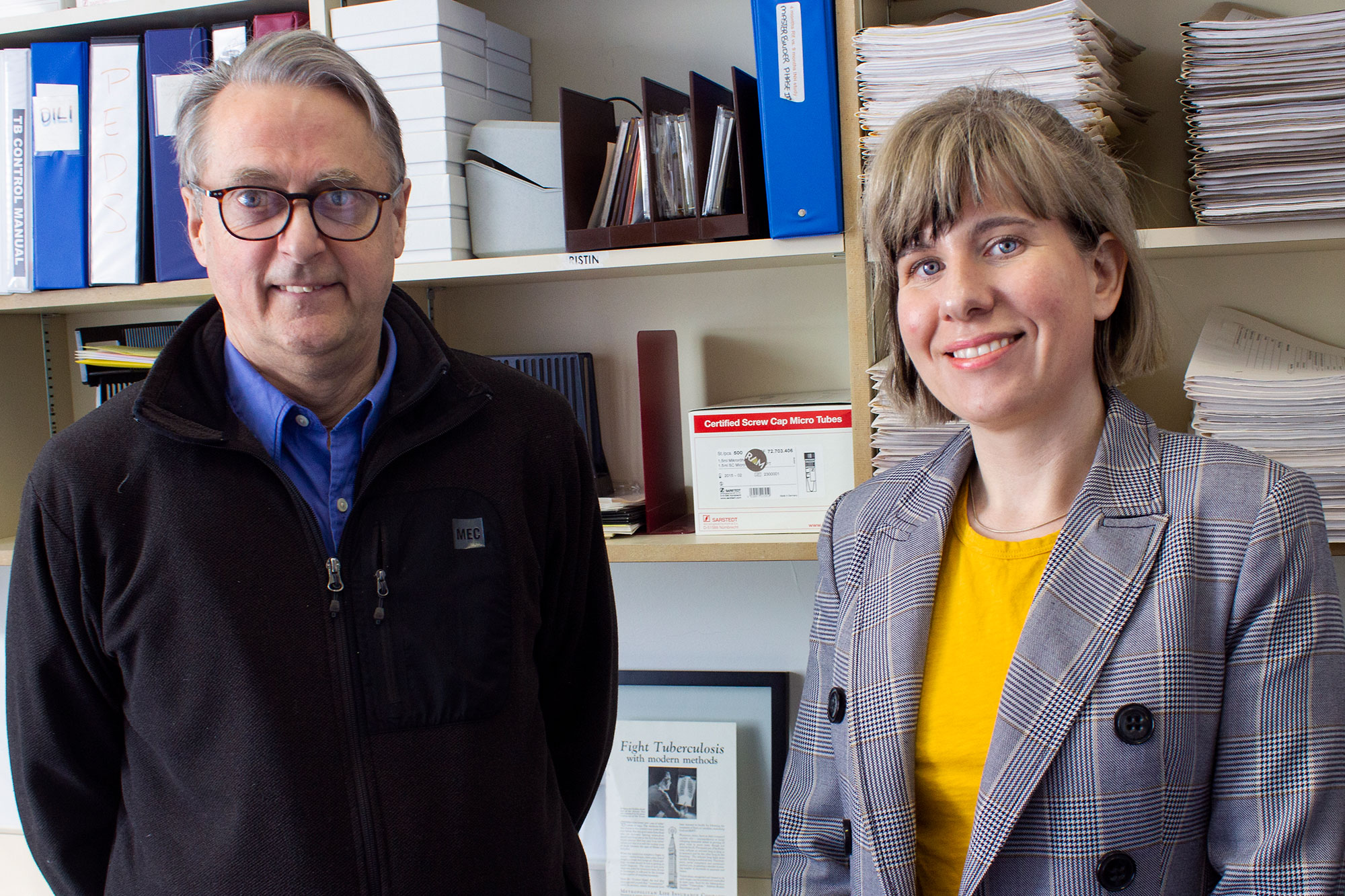
Richard Long and Courtney Heffernan's work with Indigenous communities is the first project of its kind to apply the lens of human rights, dignity and the co-creation of an ethical space to the fight against TB in Canada.
For most Canadians, tuberculosis (TB) is a disease they read about in history books. But for some Indigenous communities in Canada, TB is an ongoing concern; one made worse by the lingering effects of colonialism. With support from a $1.5-million grant from the Canadian Institutes of Health Research (CIHR), University of Alberta researchers are attempting to address the mistakes of the past in partnership with the Indigenous peoples most affected.
The Path to Health Equity
The Pathways to Health Equity for Aboriginal Peoples initiative is a Government of Canada program that "aims to develop the evidence base in how to design, offer and implement programs and policies that promote health and health equity in four priority areas: mental wellness, tuberculosis, diabetes/obesity and oral health." It supports research projects that investigate health inequities between Indigenous and non-Indigenous Canadians to understand their causes and work towards solutions.
The multi-year project, led by Long and researcher Courtney Heffernan, is part of a strategic funding initiative called Pathways to Health Equity for Aboriginal Peoples, focused on the priority area of TB.
"The difference in TB rates between Indigenous and non-Indigenous people is actually growing," Heffernan said. "Socioeconomic improvements in the lives of Canadian-born non-Indigenous peoples have allowed the rate of this disease of poverty to fall rapidly, while the decline is much slower among Indigenous Canadians, especially in the Prairies and the eastern Arctic."
"Exclusion isn't a one-time thing, though," she added. "Colonialism is an ongoing process-from the first settlers, who developed policies and infrastructure that helped TB proliferate among Indigenous peoples, including our history with residential schools, and traditionally treating TB by removing people from their homes, far from family and friends, and putting them in a western system of medicine."
"As a result, treating TB today comes with those kinds of associations, this historical baggage," said Long.
Long and Heffernan's project follows the framework outlined in the World Health Organization's Patients' Charter for Tuberculosis Care, which promotes a patient-centred approach and lays out the rights of patients diagnosed with TB. These include the right to participate in decisions around care, and the right to dignity, information, choice and justice; things that Canada has failed to appropriately provide to many Indigenous communities, Long says.
"TB is a disease of poverty, and the fact that it is still so prevalent in the Indigenous population of a high-income country like Canada is a disgrace," he said. "There are several international and national human rights documents specifically related to Indigenous people, like the United Nations Declaration on the Rights of Indigenous Peoples (UNDRIP), the Truth and Reconciliation Commission Report and Jordan's Principle, that are simply not being honoured."
Working together to identify interventions
In the first two phases of the project, which began in 2014, Long and Heffernan identified four communities in northern Alberta and Saskatchewan that shared a number of similar characteristics, including elevated rates of TB disease.
Working in collaboration with multiple partners-including community members and leaders, physicians and government representatives-interventions to reduce TB case rates were selected. The work is now entering its third and final phase, which involves expanding the project into northern Manitoba and Nunavut--other regions of the country with high rates of TB disease.
Renewing broken relationships
Long and Heffernan's project is the first of its kind to apply the lens of human rights, dignity and the co-creation of an ethical space to the work being done by communities and governments in the fight against TB in Canada. For example, the collection and sharing of data in, and across, communities is being conducted in accordance with the principles of OCAP-ensuring that the Indigenous communities Own, Control, can Access and Possess these data-which until now was unprecedented, Long says.
"This allows the community to develop TB prevention and care interventions specific to their own needs," said Heffernan.
"The TB Pathways project has inspired the Public Health team in Wood Buffalo to consider the eradication of TB in a very different way," said Jennifer Splaine, North Zone public health area manager for Alberta Health Services. "It has shifted our perspective from a clinical one to one of including the community in our plans towards eradication. We have a deeper understanding of the historical impacts of TB and the social determinants of health on current-day service disparity and equity."
Though the project's long-term impacts on TB rates are not yet known, Long and Heffernan agree it has been successful so far in changing the relationship between TB prevention and care programs and the community. It's as much about the implementation of rights for communities where rights had been historically ignored as it is about the implementation of science, says Heffernan.
"Essentially, the project is an example of how relations between Indigenous and non-Indigenous Canadians can be renewed on the basis of the principles of respect and reciprocity in the sphere of health," she said. "It's about moving forward on a path that respects dignity and human rights, and has the potential to improve health outcomes for a community suffering from preexisting and persistent colonizing practices."